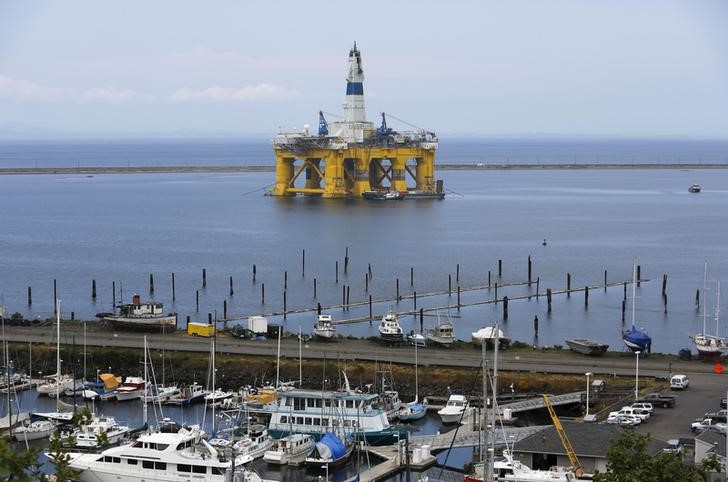Investing.com - Crude held gains in Asia on Thursday, with Brent topping $50, with investors cautious ahead of an OPEC meeting next week in Vienna which will be notable with long-time Saudi oil minister Ali bin Ibrahim Al-Naimi not heading the Saudi delegation.
On the New York Mercantile Exchange, WTI crude for June delivery traded up 0.65% to $49.88 a barrel. Brent crude gained 0.72% to $50.10 a barrel.
Representatives from the 13-nation oil cartel, however, are not expected to reach a deal on a comprehensive production freeze at the meeting in Vienna, as Iran stands firm on a stance of increasing output to reach 2007 pre-sanction levels.
Overnight, crude futures tested $50 a barrel on Wednesday, a level last reached in mid-October, before closing near session-highs as continued declines in domestic production offset an unexpected surge in U.S. gasoline inventories last week.
On the Intercontinental Exchange (ICE), Brent crude for July delivery wavered between $48.91 and $49.68 a barrel, before closing at $48.62, up 0.27 or 0.56% on the day.
Both the international and U.S. benchmarks of crude are up by more than 14% since talks at a closely-watched OPEC-Non OPEC summit in mid-April collapsed when Saudi Arabia insisted that Iran take part in any agreement to freeze production at January levels.
On Wednesday morning, the U.S. Energy Information Administration (EIA) said in its Weekly Petroleum Status Report that U.S. commercial crude inventories fell by 4.2 million barrels for the week ending on May 20 in comparison with the previous week. At 537.1 million barrels, U.S. crude oil inventories are at historically high levels for this time of year.
While analysts initially anticipated a build of 2.0 million barrels, they downgraded their expectations after the American Petroleum Institute reported a massive draw of 5.21 million barrels on Tuesday after the close of trading. At the Cushing Oil Hub in Oklahoma, stockpiles fell by 649,000 on the week, slightly above expectations for a draw of 400,000. Inventories at Cushing, the main delivery point for NYMEX oil, remain close to full storage capacity.
Notably, gasoline stockpiles rose by 2.04 million barrels on the week, while distillate fuel inventories decreased by 1.28 million barrels, marking the sixth straight week of declines. A surge in gasoline inventories can set off warning signals for analysts when crude stockpiles near total capacity.
Production, meanwhile, fell by 24,000 barrels per day to 8.791 million bpd, remaining near lows from September, 2014. Crude output across the U.S. has declined in 18 straight weeks.
Elsewhere, advisers for Donald Trump advised the presumptive U.S. Republican presidential nominee to take OPEC to task for adopting a long-term strategy aimed at driving down the price of oil in an apparent effort to crowd out U.S. shale producers. OPEC is widely expected to leave its production strategy unchanged when it convenes for a semi-annual meeting next week in Vienna.
Last week, Russia energy minister Alexander Novak expressed skepticism that OPEC will accomplish any meaningful developments at the meeting that could lead to a comprehensive freeze. At the same time, Iran has been hesitant to cap output as it continues to ramp up production with goals of reaching 4 million bpd in the second half of 2015.
"We have to look at the global playing field and see which of our partners - OPEC, Iran, Russia - are playing fair in the global marketplace," U.S. Congressman Kevin Cramer (R, North Dakota) told Reuters.
On Thursday, Trump is scheduled to deliver a speech at the Williston Basin Petroleum Conference in Bismarck, an area hit hard by the recent downturn in oil prices. Crude futures have slumped by more than 50% since hitting a peak of $115 a barrel in June, 2014.
